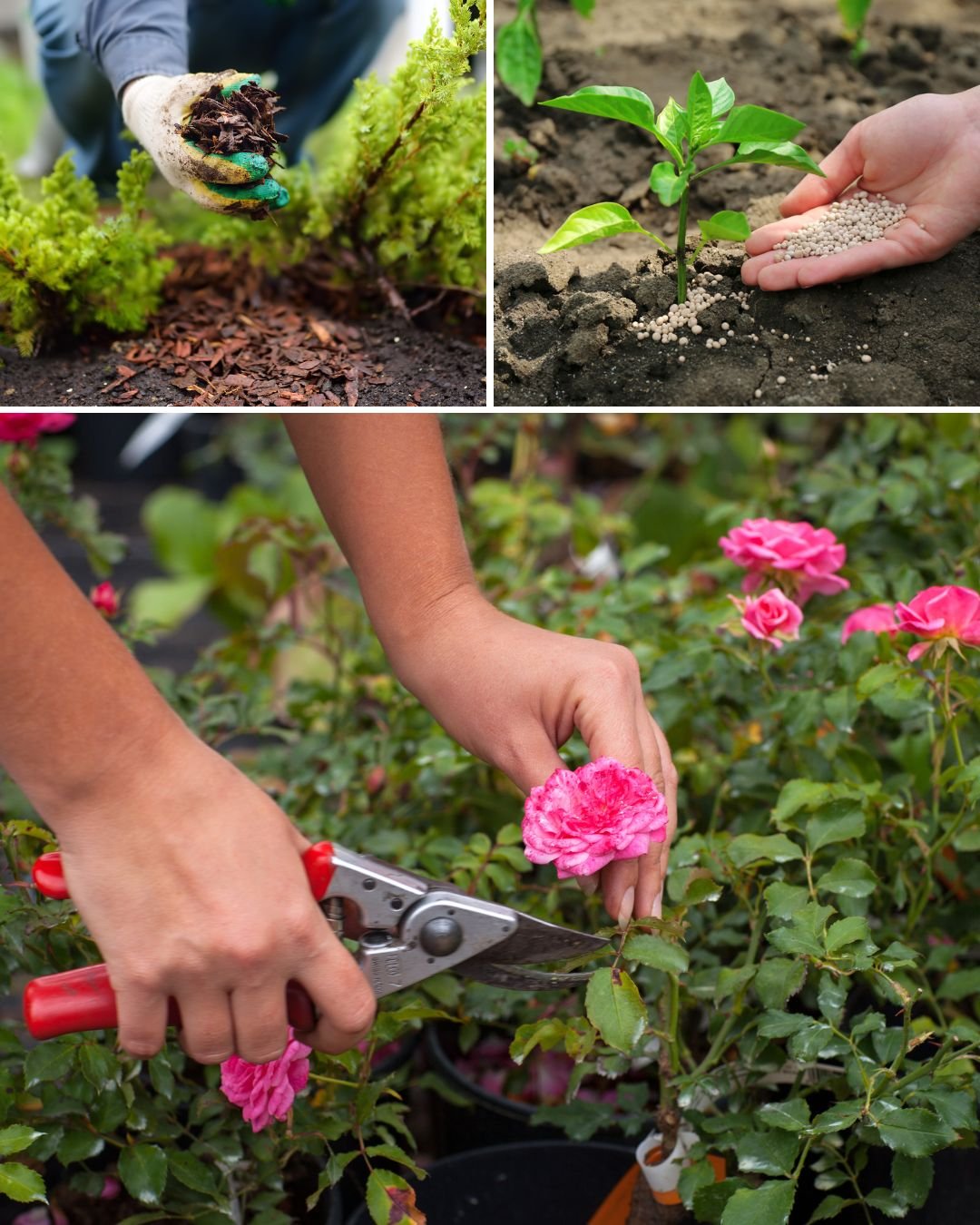February in the Southern U.S. is a transition month—winter is fading, but warm days mix with cold snaps. With mild temperatures and early signs of spring, now is the time to prepare for the growing season.

Here’s a detailed to-do list to get your garden in shape for spring!
1. Prune Trees and Shrubs
February is prime time for pruning in the South. Most deciduous trees and shrubs are still dormant, making this the perfect time to shape them without stressing new growth.


- Cut back dead, damaged, or crossing branches on fruit trees, crepe myrtles, roses, and hydrangeas.
- Prune roses by removing weak stems and cutting back hybrid teas to about 18 inches.
- Avoid pruning spring-blooming shrubs like azaleas and camellias now—wait until after they flower.
- Use sharp, sanitized tools to prevent disease spread and encourage healthy, vigorous growth come spring.
2. Plant Cool-Season Vegetables
In the South, February is a great time to plant cool-season crops that thrive in mild temperatures before the heat arrives.


- Direct seed lettuce, spinach, radishes, carrots, beets, and mustard greens in well-prepared soil.
- Transplant broccoli, cabbage, collards, and kale from indoor seedlings or nursery starts.
- Use row covers to protect against late frosts and extend the growing season.
- Keep soil evenly moist, but don’t overwater—soggy soil encourages root rot.
3. Fertilize Fruit Trees and Shrubs
Early February is a great time to fertilize fruit trees before they start active growth.


- Apply a balanced fertilizer (10-10-10) around the drip line of fruit trees like peaches, plums, and apples.
- Blueberries and azaleas prefer an acidic fertilizer with ammonium sulfate.
- Avoid high nitrogen on flowering shrubs like camellias—too much will reduce blooms.
- Scratch the fertilizer lightly into the soil and water thoroughly to help nutrients soak in.
4. Start Warm-Season Vegetables Indoors
While it’s too early to plant heat-loving crops outside, February is the perfect time to start seeds indoors.


- Start tomatoes, peppers, and eggplants in seed trays under grow lights.
- Use a high-quality seed-starting mix and keep the soil consistently moist but not soggy.
- Transplants will be ready for the garden in March or April once temperatures are stable.
5. Refresh Mulch in Garden Beds
Mulching helps regulate soil temperature, reduce weeds, and retain moisture as spring approaches.


- Apply a 2-3 inch layer of mulch around perennials, trees, and shrubs.
- Use organic mulch like pine straw, shredded leaves, or hardwood bark.
- Keep mulch a few inches away from plant stems to prevent rot and pests.
6. Check for Pests and Treat Early
With warming temperatures, overwintering pests are waking up.


- Inspect plants for aphids, scale, and spider mites—treat early before infestations grow.
- Apply dormant oil to fruit trees and roses to smother insect eggs.
- Use neem oil or insecticidal soap for organic pest control.
7. Divide and Transplant Perennials
February is ideal for dividing and transplanting hardy perennials before new growth starts.


- Divide daylilies, hostas, and irises if they are overcrowded.
- Replant divisions immediately with compost-rich soil for better growth.
- Water well and mulch lightly to protect against temperature swings.
8. Prepare Soil for Spring Planting
Get garden beds ready for March planting by improving soil structure now.


- Add compost, aged manure, or peat moss to boost organic matter.
- Till or turn over the soil to aerate and prevent compaction.
- Test soil pH and adjust as needed (add lime for acidic soil and sulfur for alkaline soil).
9. Plant Hardy Annual Flowers
Give your garden early color with flowers that can handle cool weather.


- Direct sow poppies, snapdragons, alyssum, and larkspur.
- Transplant pansies, violas, and dusty miller for long-lasting blooms.
- Fertilize lightly to encourage strong root development.
10. Lawn Care – Start Pre-Emergent Weed Control
Prevent crabgrass and broadleaf weeds before they sprout!


- Apply pre-emergent herbicide in late February to early March.
- Avoid using weed killers if you plan to overseed your lawn this spring.
- Mow lawns high to protect emerging growth.
11. Trim Ornamental Grasses
Cut back ornamental grasses like fountain grass and pampas grass before new shoots emerge.


- Trim to about 6 inches above the ground.
- Remove dead foliage to allow sunlight and airflow.
- Divide large clumps if needed for healthier regrowth.
12. Start Summer Bulbs Indoors
Get a head start on summer blooms by planting bulbs in pots indoors.


- Start gladiolus, caladiums, and dahlias in containers.
- Keep in a warm, sunny location until it’s time to transplant outdoors.
- Use moist, well-draining soil to prevent rot.
13. Protect Against Late Frosts
Even in the South, surprise frosts can occur in February.


- Keep frost cloths or old blankets handy for cold-sensitive plants.
- Water plants before a freeze to insulate roots.
- Cover tender seedlings with straw or floating row covers.
14. Check and Repair Irrigation Systems
Before the growing season starts, ensure your irrigation system works properly.


- Test drip irrigation lines and sprinklers for leaks.
- Adjust sprinkler heads for even water coverage.
- Clean clogged nozzles to ensure good water flow.
15. Order Seeds and Plants
Get ahead of the spring rush by ordering seeds, bulbs, and transplants now.


- Choose heat-tolerant varieties for summer planting.
- Order fruit trees and berry bushes for March planting.
- Stock up on fertilizers, pest control products, and garden tools.
Final Thoughts
You’ll set yourself up for a thriving spring garden by checking off these February gardening tasks!
Taking the time to prune, fertilize, plant, and prep your soil now will save time and effort in the busy months ahead.
🌱 Happy gardening! 🌿💚

